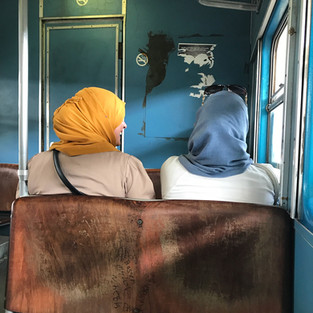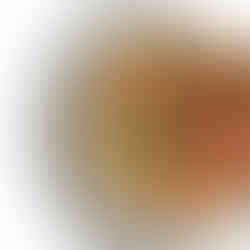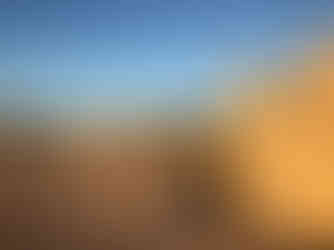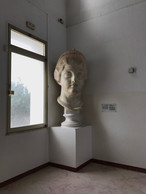All aboard the Tunis-Goulette-Marsa train for a trip back in time
- Nicola Chilton
- Jun 3, 2020
- 8 min read
Updated: Dec 14, 2020
I love train trips, especially local trains that pootle from place to place in a completely unhurried way, letting you feel the wind on your face through the open windows. The slow service from Bangkok to Ayutthaya, the circular route around Yangon, and the Tunis-Goulette-Marsa railway, or TGM, are some of my favourites. So today, let's hop on the TGM that runs between Tunis Marine station and Marsa Plage, connecting some of the most interesting of the Tunisian capital's neighbourhoods. All aboard!
We'll start in lovely Sidi Bou Said, Tunisia's prettiest village perched high on a hill above the Mediterranean, well rested from our good night's sleep at the Dar Said hotel, where we awoke to the scent of jasmine blossoms and the sound of birds tweeting in the tiled courtyards. Both my parents and grandparents visited Sidi Bou Said on separate occasions in the 1970s when tourism to Tunisia was booming, and I still remember the blue and white birdcage my grandparents brought home. But tourism to Tunisia hasn't been booming for some years now, and memories of the brutal 2015 terrorist attacks on the beach in Sousse and in the capital's Bardo Museum that killed 60 people, mostly Brits, are still fresh. In 2018 the British government reversed its travel advice for Tunis, paving the way for travellers to return, but memories can be slow to fade, and a return to a once-loved destination can be a long journey.
Even without many international tourists, the narrow lanes of Sidi Bou Said are still busy with local families on weekends, taking photos under the billowing clouds of bougainvillea and against the sturdy wooden doors for which the village has become famous, stopping to eat sweet bambalouni doughnuts, and pausing at the cafes to take in the sea views as they sip on tea and puff on shisha. In the early morning it's still quiet though, and you can stroll the cobbled lanes alone, with only the street cats for company.
No visitor comes to Sidi Bou Said without going to Café des Nattes, so we'll take a seat on the stone steps, order a thé aux pignons (mint tea with pine nuts), buy a machmoum jasmine bouquet from the friendly vendor who's almost part of the furniture here, and breathe in the Mediterranean morning air. You'll see - and smell - these machmoums everywhere in the summer months, bundles of fresh fragrant jasmine blossoms tied tightly with wire, often tucked behind the ears of local men.
The hill that leads down from Café des Nattes is lined with souvenir shops selling the famous bird cages, ceramics, carpets, puppets, paintings and other smaller tchotchkes that should squeeze into even the tiniest space in your suitcase. Shopping is friendly and fun here, and you shouldn't leave without picking up at least one souvenir to take home. But we'll save that for later as this is the hill that will take us to the TGM station. For now, we'll wander Sidi Bou Said's streets a little more, and treat ourselves to lunch at one of the loveliest places in the village, Dar Zarrouk. The Mediterranean light floods the bright dining room here, and the menu is a celebration of local seafood, including Tunisian mezze, shrimp and bottarga spaghetti, and some very good local white wines. The food in Tunisia is a mix of North African flavours with a heavy Italian influence - after all, it's only 350 km to Sicily, and on a clear day you can see the Italian island of Pantelleria from the east coast, just 75 km away. One of the lovely things about dining as a solo traveller in Sidi Bou Said is that I've never been given the ghastly lone-diner table next to the bathroom, and instead have always been given a lovely spot in the centre of the restaurant, with incredibly kind staff making sure I'm happy (and invariably, I am).
Let's try not to fall into a post-prandial torpor, which would be very easy with all of these delightful cafes to lounge at. We'll come back to Sidi Bou Said for the evening once the tourists have left, but for now we have a train to catch and the cool Mediterranean breezes that enter the open windows should refresh us for our next destination. The TGM train has been running since 1872, but will take us much further back in time than that, millennia in fact, to the ancient Phoenician settlement of Carthage. Or what's left of it. When Cato the Censor infamously said "Carthage must be destroyed", he wasn't joking. What had been the vibrant centre of Phoenician culture was completely razed to the ground by the Romans in 146 BC, in what some historians call the world's first genocide. Roman Carthage, built on the ruins of the previous settlement, was also subsequently destroyed by the Arab conquests eight centuries later, and it takes a bit of imagination today to envision how it must have looked all those centuries ago as a centre of commerce and culture.
But our imaginations are strong, and we'll make our way from Carthage-Hannibal Station up Byrsa Hill to the Carthage Museum, where we'll see treasures excavated from the ruins including fine marble statues and intricately detailed mosaics. We'll then head down the hill again to the Roman Theatre where concerts are still held in summer, and the Antonine Baths on the water's edge. These baths were the largest outside Rome, with open air swimming pools, sun terraces, tepidaria, caldaria, and a frigidarium cold pool with a 15 metre dome. And, as all good Roman baths had back then, communal loos with seats for up to 80 people where the Carthage residents could discuss daily business while they did their business. All that remains today are the foundations, a few chunks of marble showing how exquisite the carvings must have been, and some columns, mostly broken.
Carthage today is an upscale residential area, with the ruins spread out between the luxury homes and shops (and, according to some reports, languishing beneath them). Many of the sights are well organised and protected with security guards and ticket gates. Others, including some 2,000-year-old Roman cisterns that I ventured into on the recommendation of an elderly man who cycled up to recommend I explore, seem to be left to their own devices, covered by weeds and a fair amount of rubbish, right next to a nightclub car park.
Now that we've had our fix of the ancient world, let's jump back on the TGM and head to our next stop, La Goulette, and an opportunity for another meal (who's counting?). La Goulette is the main fishing port of Tunis, just 10 minutes on the train from Carthage. We're heading to La Petite Etoile, open since 1962 and located where the fishing boats dock and the fishermen fix their nets. Don't expect sublime harbour views - this is a working port rather than a picturesque marina - but do expect sublime flavours. We can order from the menu, or we can leave it in the good hands of our waiter. Whichever we choose, we can't miss the pasta cooked with fish head, and we must wash it down with cold Celtia beers.
Tunisia is as Mediterranean as it is African, as contemporary as it is ancient. Let's hop back on our lovely TGM and head to the heart of the capital, and what makes every North African city tick - its Medina. Our train will take us, in around 15 minutes, to Tunis Marine station, from where we'll stroll along the tree-lined Avenue Habib Bourguiba, Tunis's Champs Elysées. Let's stop to take a look at the Cathedral of Saint Vincent de Paul with its Moorish revival-style bell towers, before we pass through Bab el Bhar, previously known as the Porte de France, and dive in to the Medina.
The Tunis Medina is a living, breathing city within a city. Parts of it are in the Ottoman style, resembling Istanbul's Grand Bazaar, whereas others are unmistakably Tunisian, with the same brightly painted wooden doors that we saw in Sidi Bou Said. It's a friendly, relaxed place, there's no hard sell, no hangers-on, and with the reduction in tourism over the past few years, the vendors are genuinely pleased to see you. But let's not just stick to the shopping streets. The narrower and windier an alley, the more interesting it tends to be, so let's wander and get lost. As long as we remember where the main Zitouna Mosque is, we'll always find our way back to the centre.
One of the oldest, and most atmospheric, parts of the Medina is the Chechia souq, or Souk Ech-Chaouachine, where the flat woollen caps known in other parts of the region as tarboush or fez have been made for centuries (if you followed along on the first part of my Cairo love story, you'll remember another maker of these traditional hats). As in other parts of the region where these caps have fallen out of favour, the number of artisans has dropped dramatically over the years, however the craftsmen are trying to innovate and modernise, making hats in different colours to be worn for their pure fashion value. I bought one in Sidi Bou Said blue.
It's practically impossible not to pick up hammam towels, kaftans, spices, tea glasses, jewellery and carpets as you wander through the narrow alleys. Some shopkeepers will invite you up to their rooftops for panoramic views (sometimes this requires a tip to be paid, other times not) and it's definitely worth going up for a look. If the dazzling selection of items to buy gets a bit much, there are lovely cafes and restaurants in old caravanserais to retreat to that are as perfect for a pit stop now as they were hundreds of years ago. One in particular, the lovely Fondouk El Attarine, is an airy oasis of calm that's the ideal place for a breather as we admire the purchases we've made over a cup of mint tea.
It's late afternoon by now, so let's head back to the TGM where we have two choices - we can either go to the end of the line to the seaside town of La Marsa for a stroll along the Corniche, or head back to Sidi Bou Said to enjoy the evening light from one of the village's rooftop cafes. There's a particular luminescence to the light here which has long inspired artists and writers, including Cervantes, Paul Klee, André Gide, Henri Matisse and Azzedine Alaïa, whose former home is now a museum with endless views of the Mediterranean waters.
Ether way, we'll get to spend half an hour on our little TGM train, enjoying the views out of the open windows of Lake Tunis, and we'll see if we can catch a glimpse of the Carthaginian ruins as we trundle past. Since we've worked up a thirst, let's alight at Sidi Bou Said and head up the hill back to the centre of the village. Halfway up on the right is Art Café, a great spot for a coffee, shisha and a bambalouni as we catch our breath and enjoy the views over the rooftops as the sun goes down, or we stretch our legs just a little further and walk to the lovely Café des Delices, perhaps the most Instagrammed spot in the whole village. With its terraced seating and postcard-perfect views, it seems a fitting place to end our day of adventures in Tunis, and the ideal setting to think about where we'll go next on our explorations of this beautiful country.

















































































































